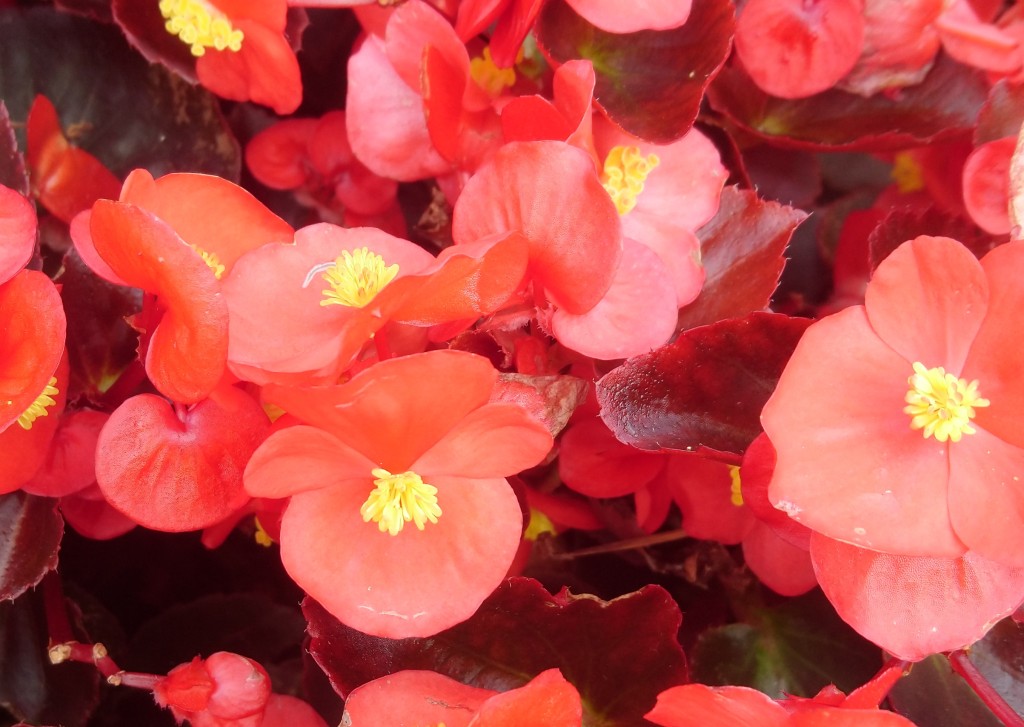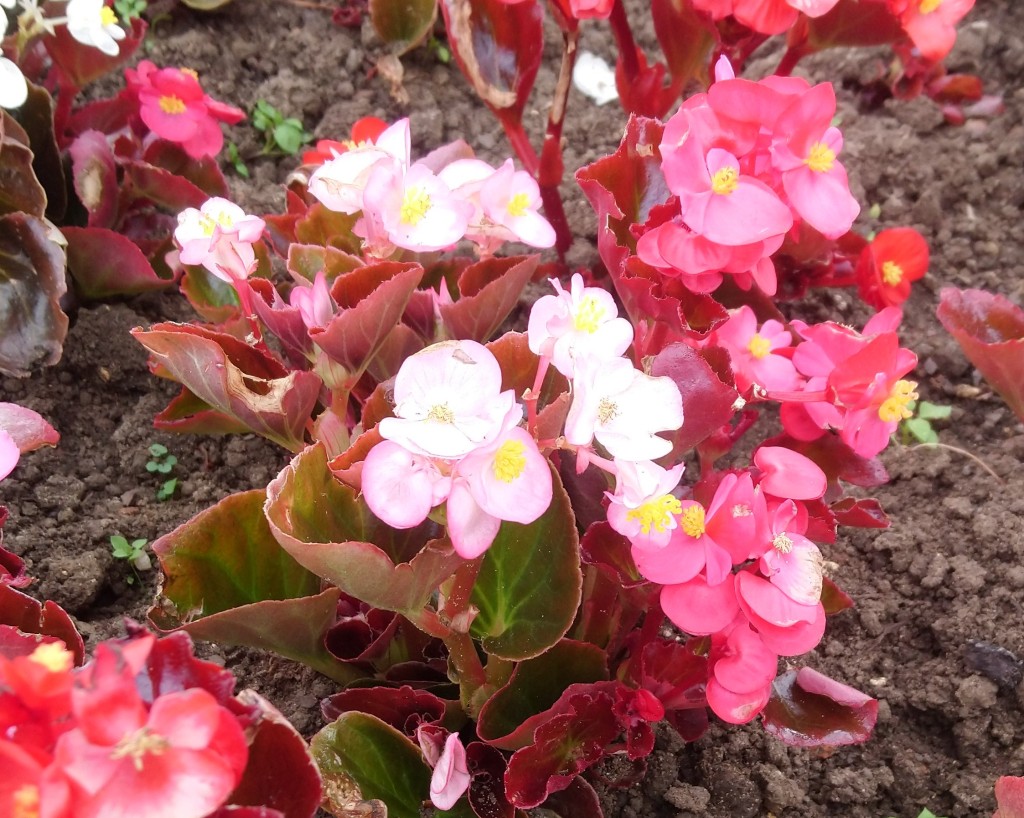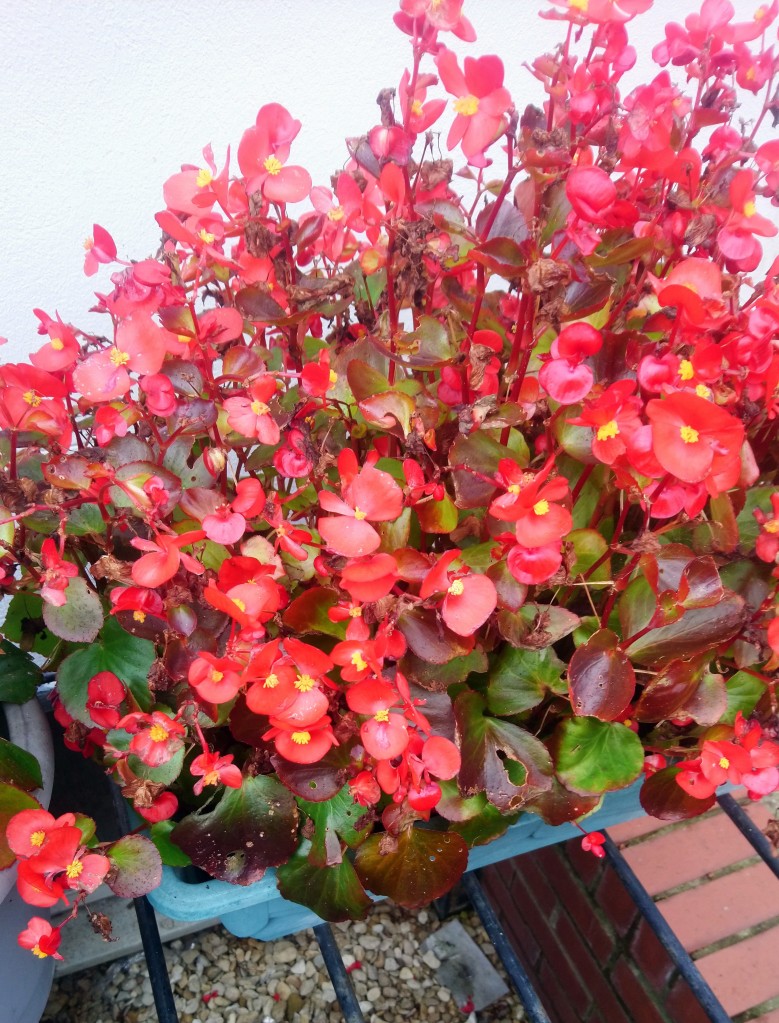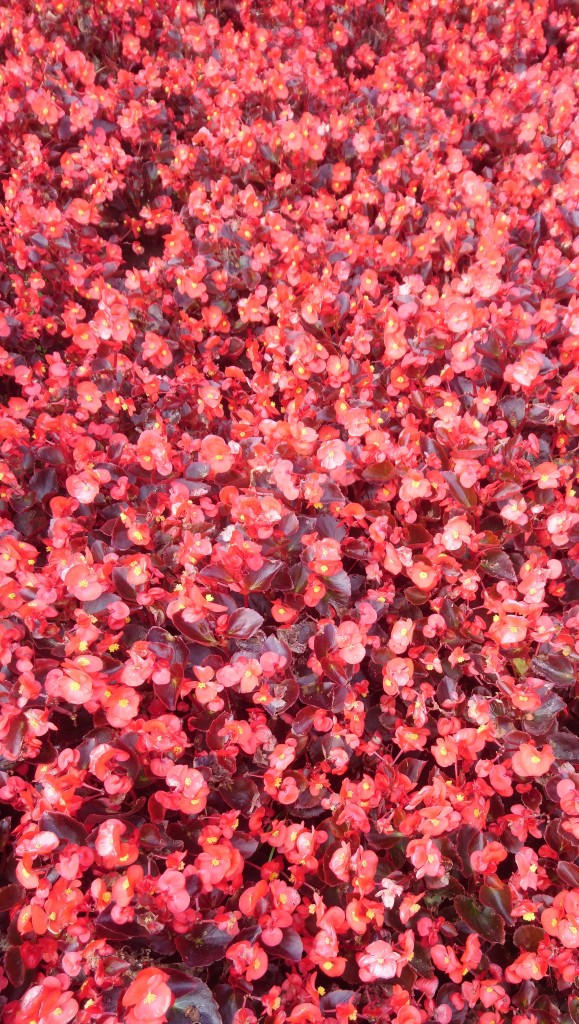
[048] Begonia cucullata, Wax Begonia
Introduction
Begonia cucullata, Wax Begonia is a perennial flowering plant native to South America, which is frequently used in ornamental gardens to provide colourful ground cover.
It is also known as a Clubbed Begonia.
Taxonomy
Kingdom – Plants
Division – Vascular Plants
Class – Flowering Plants
Order – Cucurbitales
Family – Begoniaceae (Just Begonias plus one obscure species!)
Genus – Begonia
Scientific Name – Begonia cucullatea
It has the synonyms B dispar, B nervosa, B paludicola, B setaria and B semperflorens and seems to be known generally in horticultural circles as B semperflorens.
It has about half a dozen horticultural varieties.
Name
Many garden plants are known by their scientific genus (and often by an obsolete genus that is no longer technically correct.) Begonia is an example where there is no other Common Name. We call them Begonias.
A French botanist named them to honour Michel Bégon, a former governor of the French colony that is now Haiti.
For the Wax Begonia, ‘cucullata’ means ‘hooded.’ (‘Semperflorens’ means ever-flowering.)
Description
Begonia has about 2 000 species, many of which are houseplants or garden plants. Many have strikingly different leaves and flowers. The colourful flowers have sepals but no petals. There are also many hundreds of hybrids and cultivars.
Begonia cucullata has round, smooth, flat leaves that are dark purple brown and provide excellent ground cover. Its open red flowers almost merge with the surrounding leaves and the plant can be in flower all year round.

There are varieties with white flowers.

It can be grown as a specimen plant in gardens.

Habitat and use
The Wax Begonia is native to central South America but it is now a common ornamental plant.
Other Notes
I see these plants in ornamental gardens around. They look as if they are planted everywhere and then other tall plants are added later. They can be replanted every month or so when the gardens are replanted.
What makes them useful is their uniformity. Hundreds of small plants are laid out in a tiled format to give a pretty red look to the whole flower bed – either a uniform dark red or a mixture of red and white.


When I was at University (about fifty years ago) we had a new block of rooms in the College Grounds and a Tutor once described how it looked as if the owners had asked the architect for 200 yards of something from a catalogue.
That’s the effect Wax Begonias have on me – instead of a garden, lets have an acre of Begonias.
See also
There is only one other species in the Begonia family and we won’t meet that.
